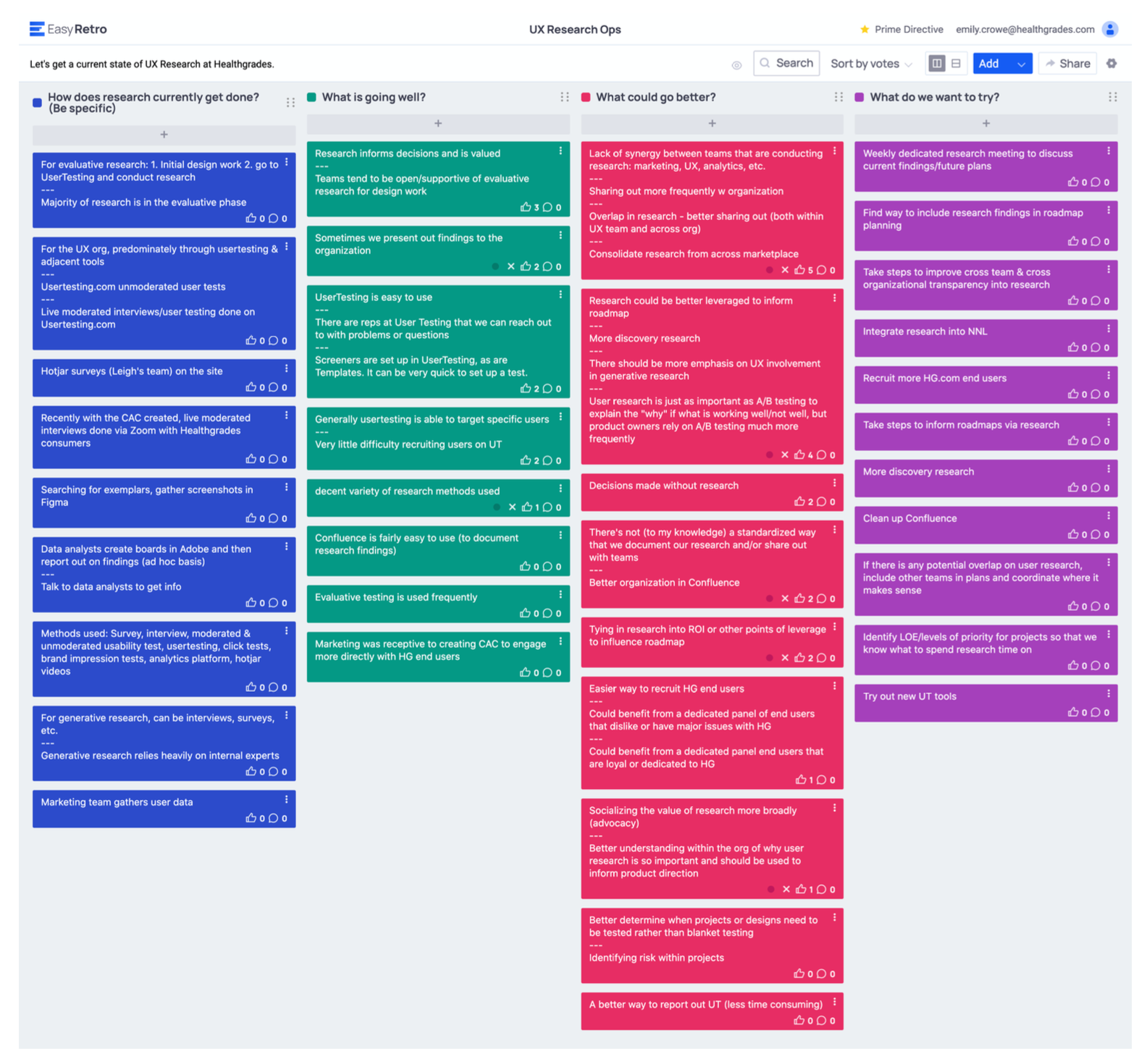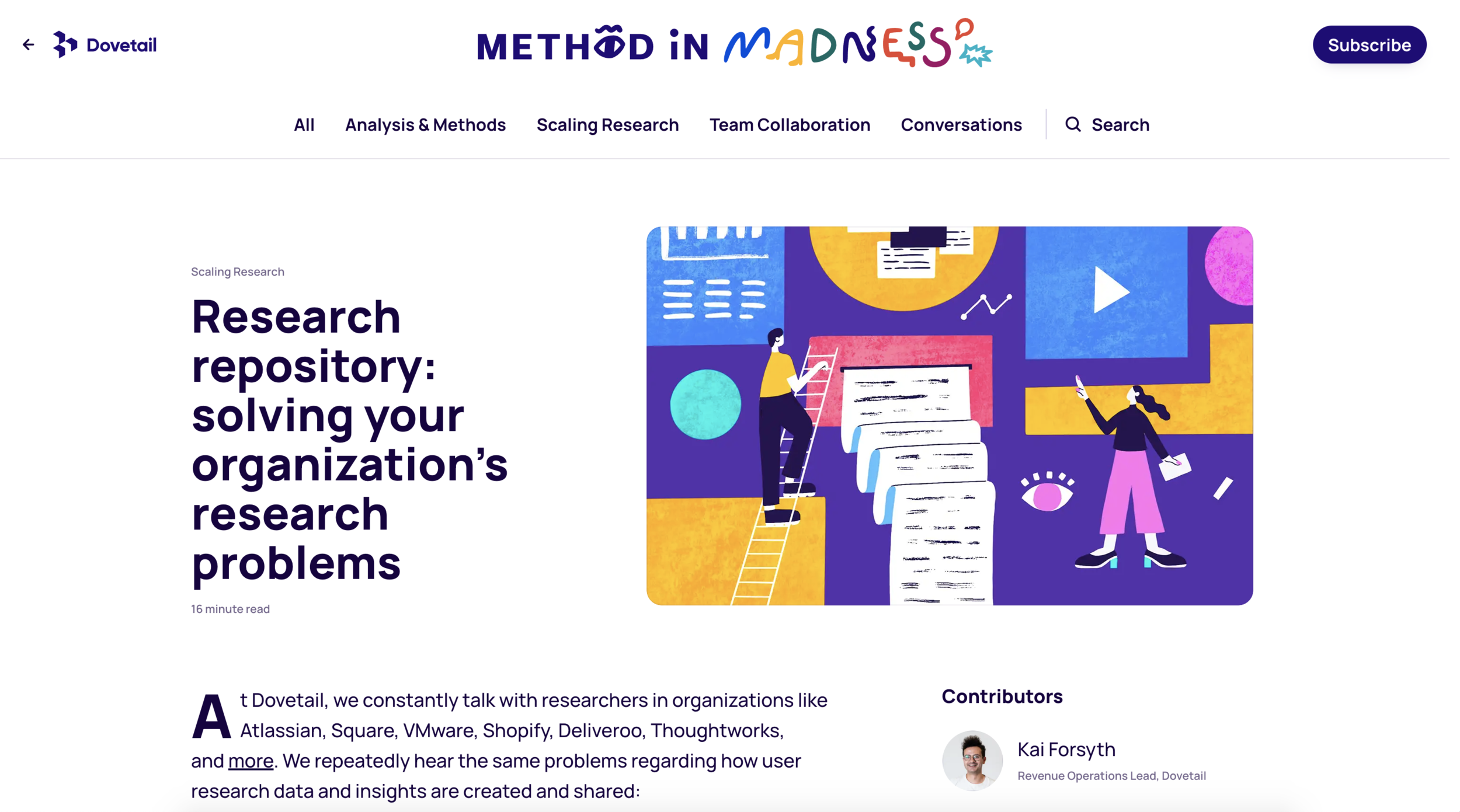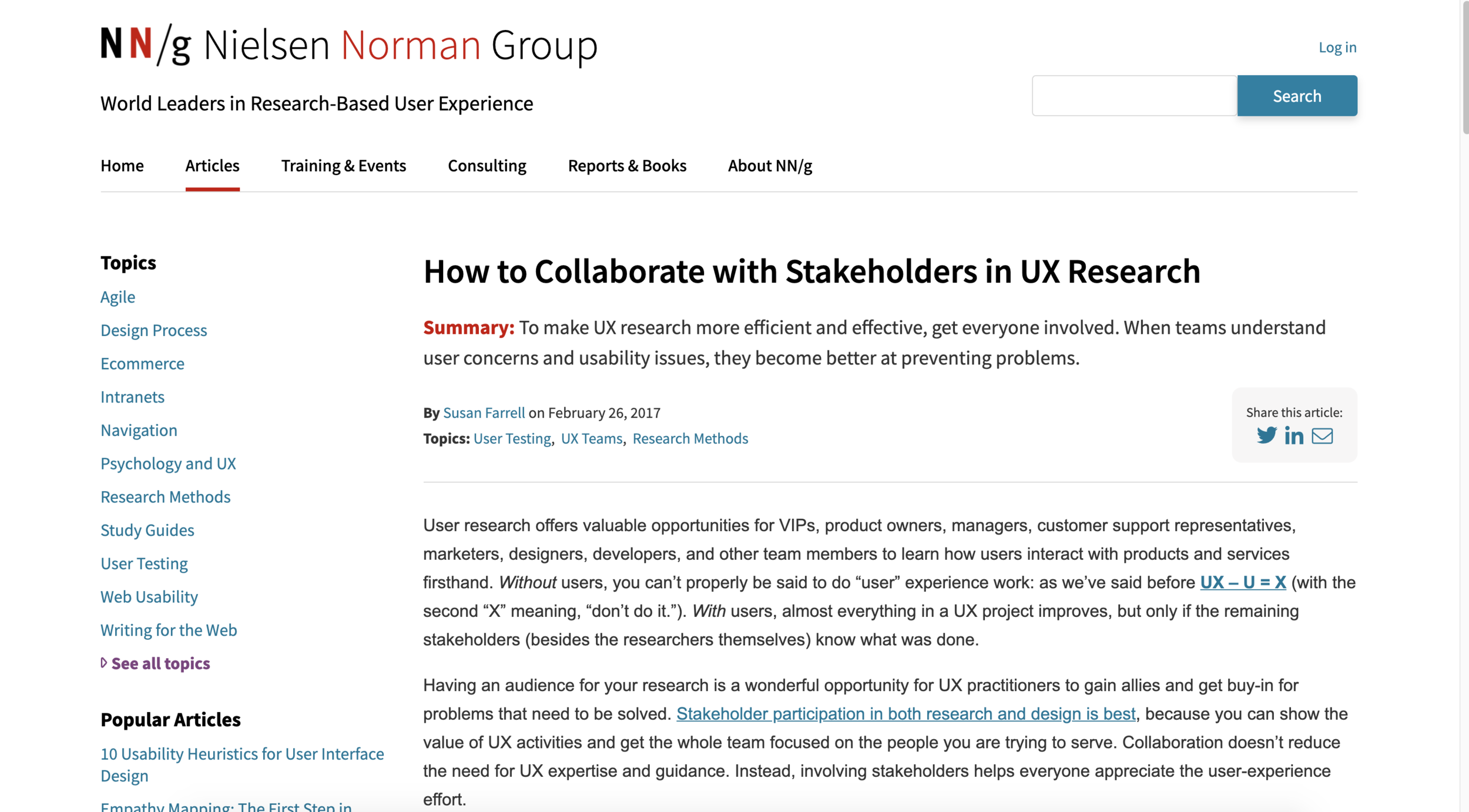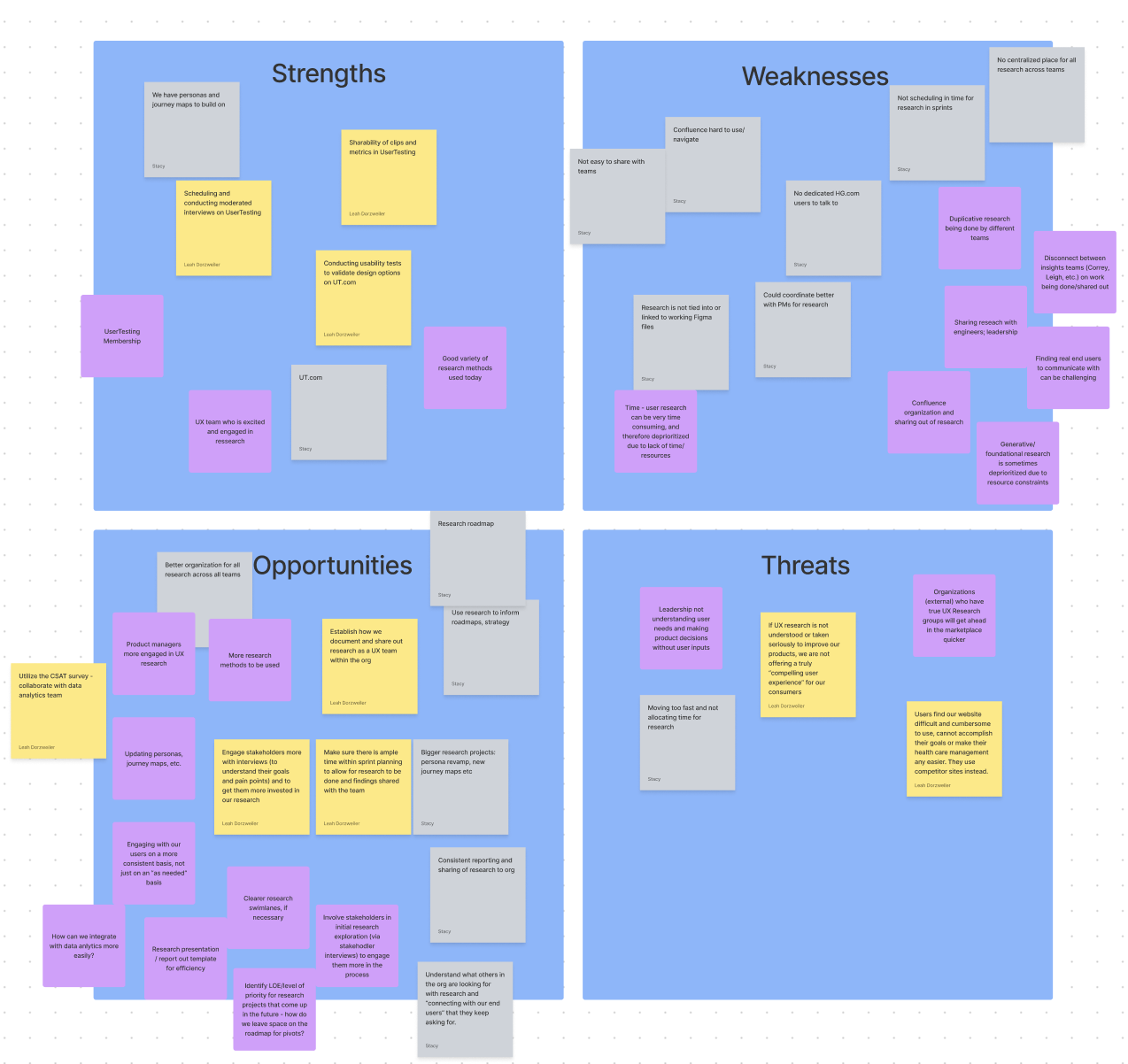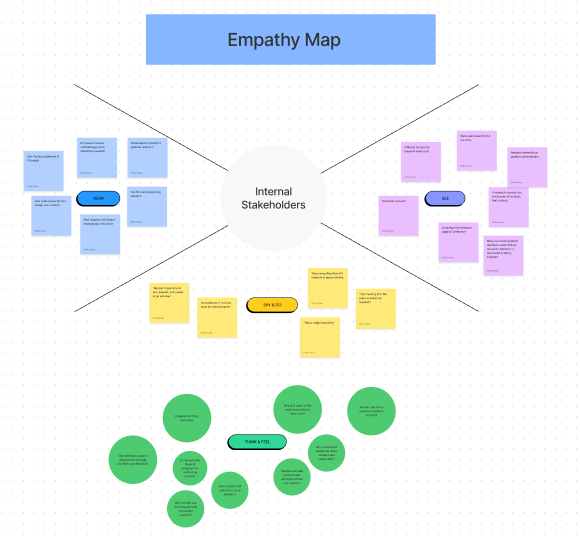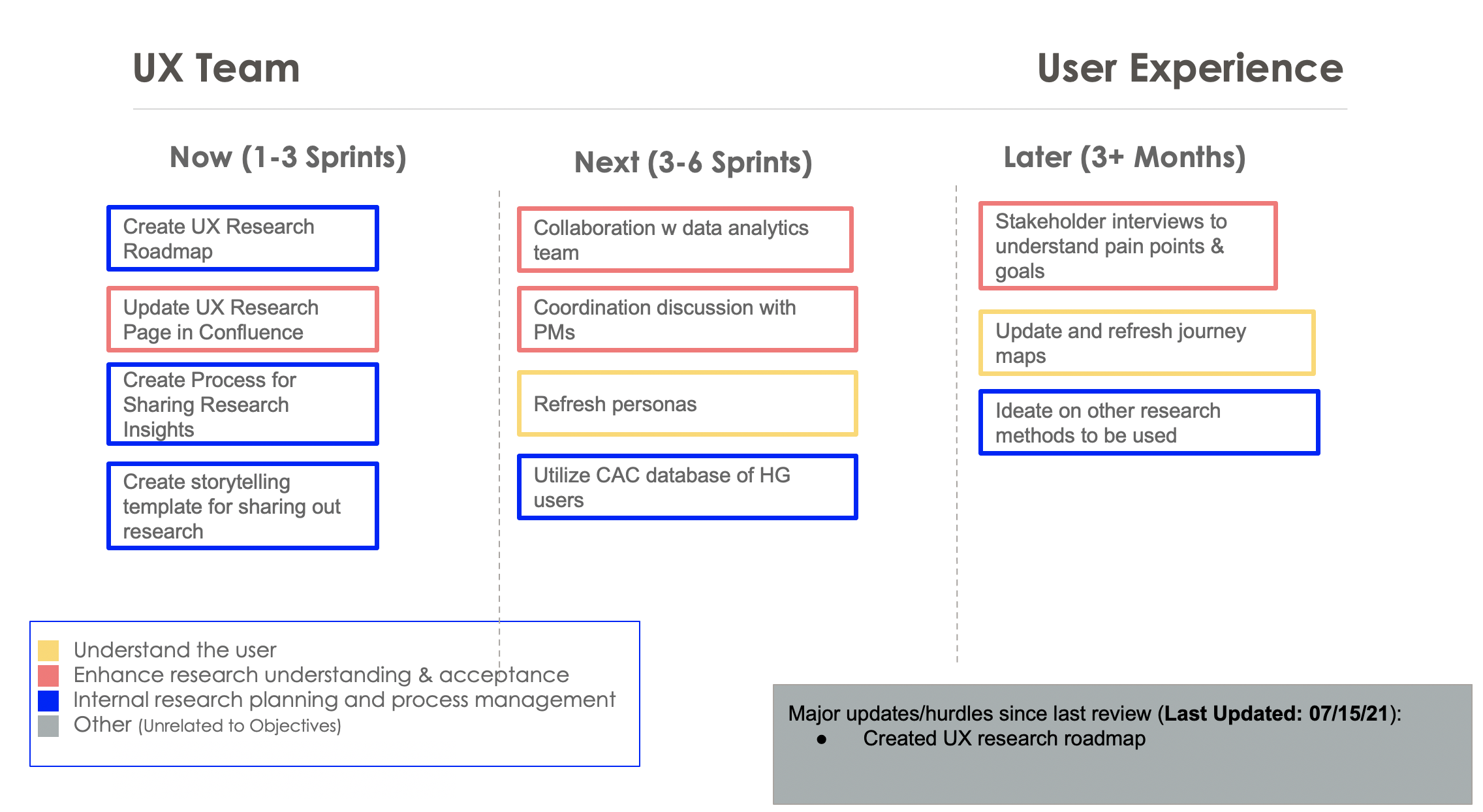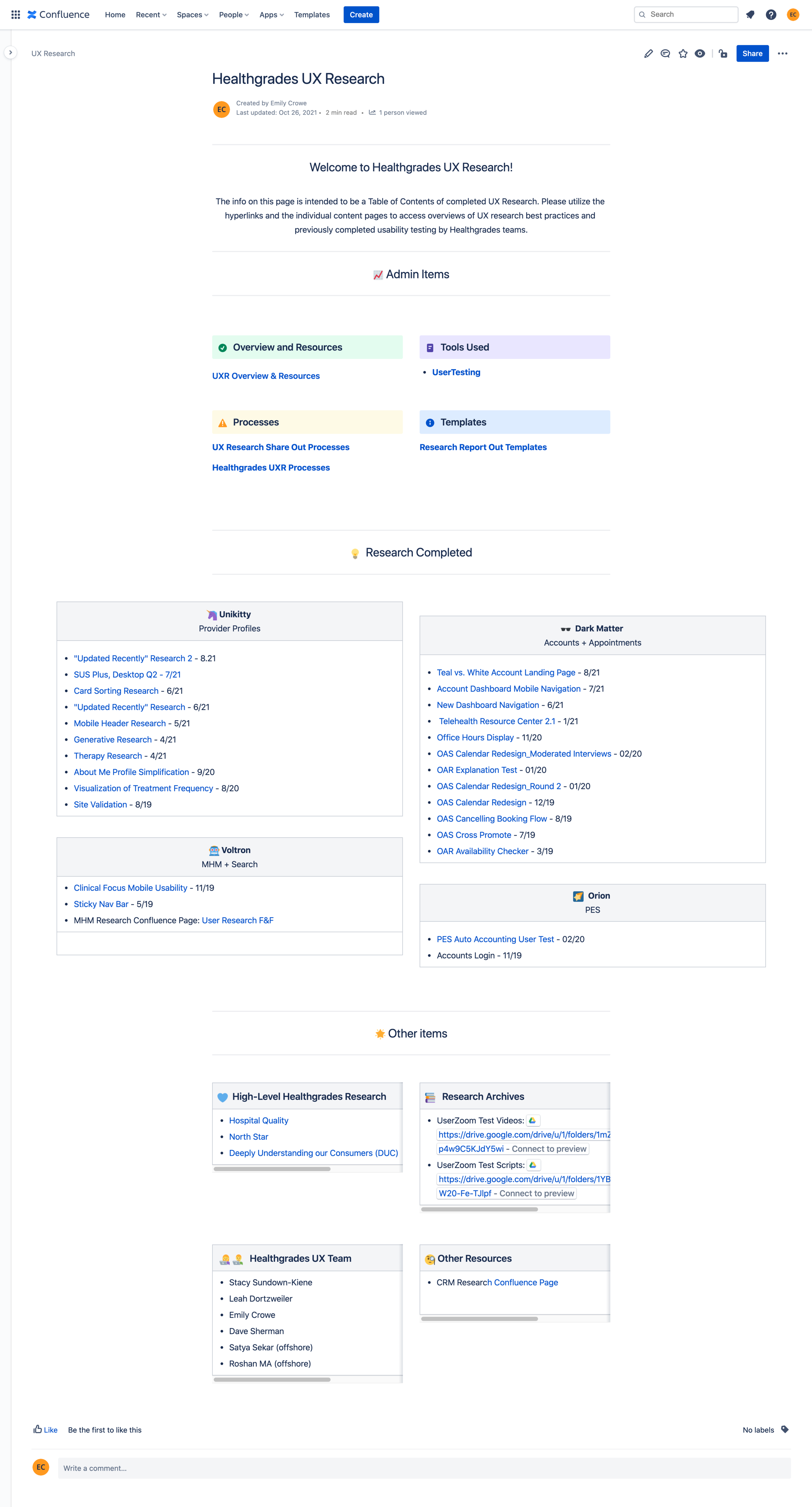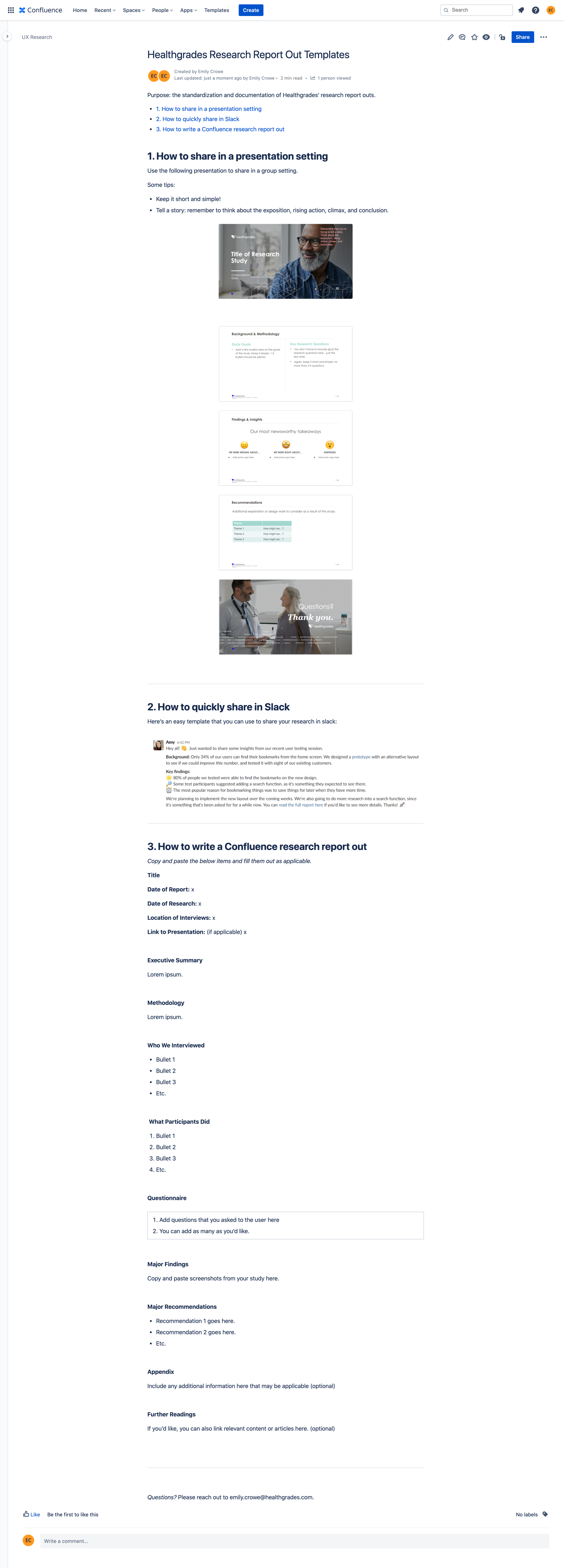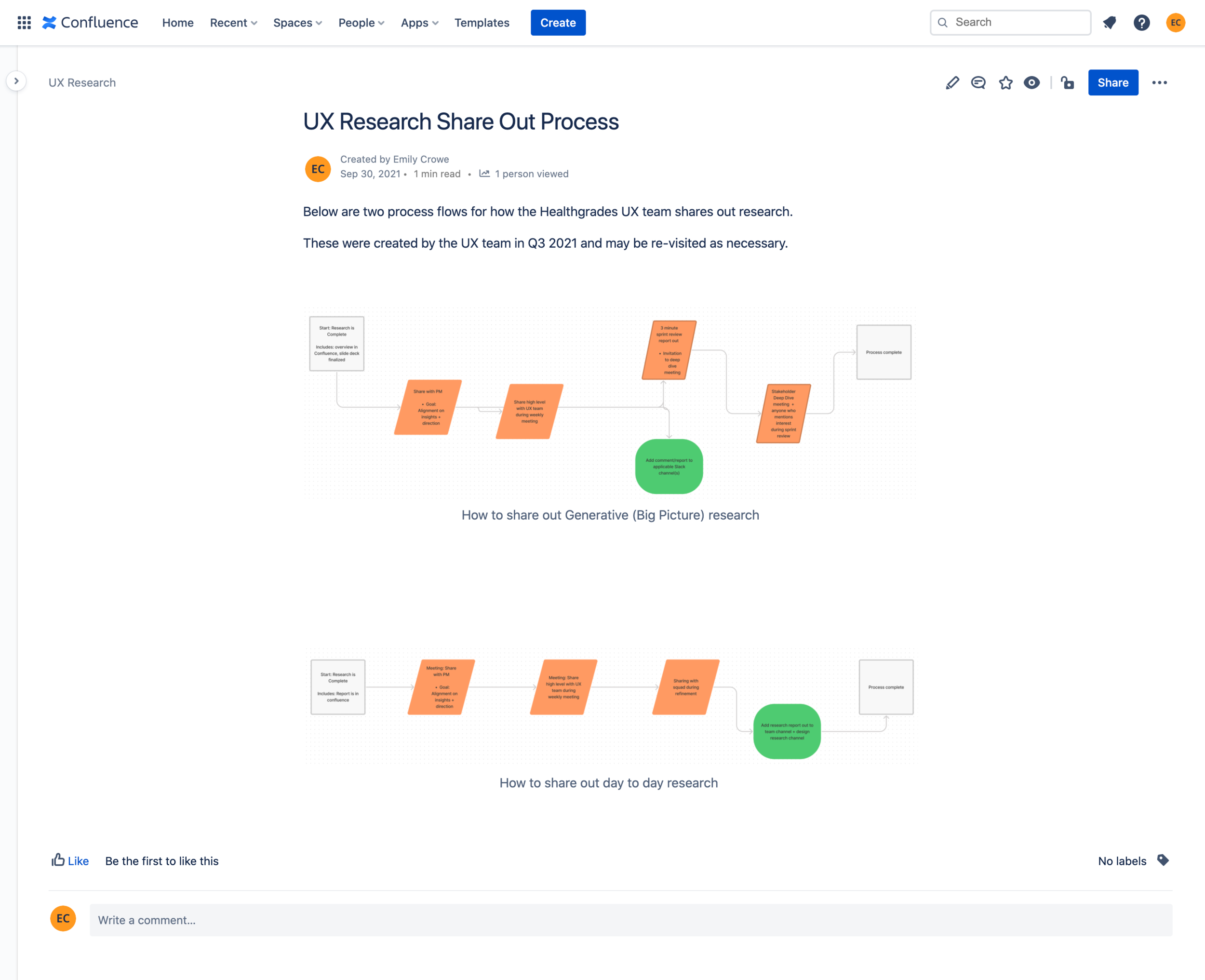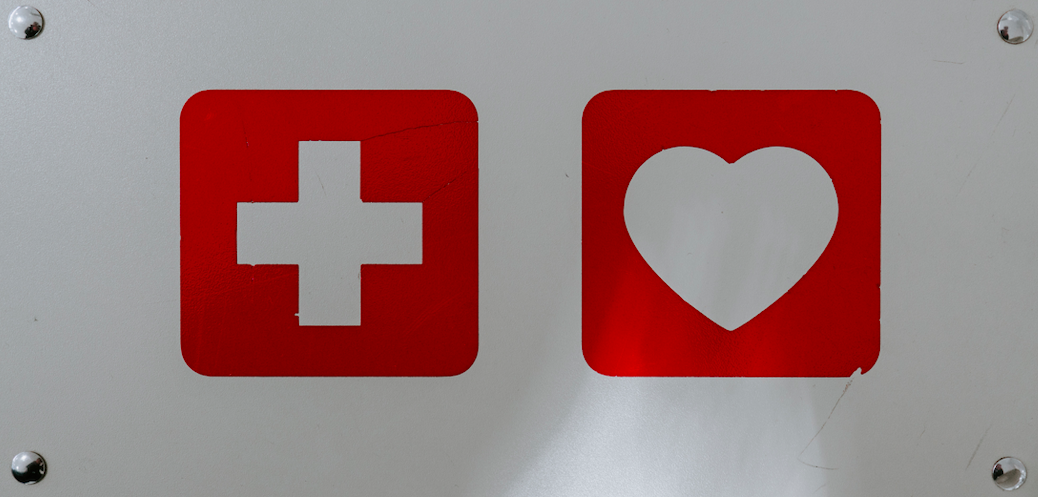Healthgrades Research Process and Roadmap Creation
The Problems
There was no standardized process for sharing, documenting, or involving stakeholders and engineers in the research process.
Research was done in silos, and sometimes designers or product owners would complete duplicative research studies.
Many artifacts were dated and needed a refresh, but there was no plan in place to update them.
So, I decided to take it upon myself and to use design thinking and the UX process to find solutions for all of these problems.
Gathering Inputs
I first held an initial exploratory meeting with the entire UX and product teams.
I asked questions such as:
❓What is your view of user research?
❔Why do we conduct research at Healthgrades?
⁉️What are the major pain points in today’s research process?
I led a “Research Ops” retrospective using EasyRetro with my UX team and interviewed product owners (PO/PMs) to gather additional inputs.
I also took a look at a few of our current artifacts that could use a refresh, such as our research repository page in Confluence:
Research on Research
Next, I collected inputs and inspiration on UX research organization best practices. These included topics such as how to collaborate with stakeholders, how to create a research repository, and the roles of UX vs product in research. I also interviewed my UserTesting.com customer success rep for best practices.
Artifacts To Emulate
I also put together a visual collection of research artifacts we’d like to incorporate into our process in the future. A few examples included empathy mapping, jobs to be done, refreshed personas, and new report out templates.
UX Researcher vs. Product Role
Another key element of the research process to consider is the role of the UX Researcher versus the Product Manager. I collected notes from around the web on what other organizations do and interviewed our PMs to learn their understanding of the PM role in the research process.
Research Share Out Standardization
Research can really be shared out anywhere that it makes sense: Slack, Confluence, Figma, Google Drive, PowerPoint, etc.
I collected artifacts of where I’d seen teams and outside organizations do this really well to use as exemplars as we considered standardizing our process.
Brainstorms and Workshops
SWOT Mapping of Current Research Process
I next led my team in a Strengths, Weaknesses, Opportunities, and Threats brainstorming exercise. This would be key to the roadmap creation later.
Next, I led an exercise for an Empathy Map around feelings and actions of internal audiences and their views on UX Research. This was done to ground our team in empathy for one of our key audiences, the internal stakeholder.
Ideal Future State
I also ideated with my team on what the ideal or perfect future state would be.
In my mind, this article on UX Research at Microsoft represents the ideal UX Research state, which is when “the quest to gather insights from customers rightfully becomes everyone’s ongoing responsibility.”
Here are the few notes that I captured during this time along with the rest of my team:
What’s Working…And What The Team Enjoys Doing
Amidst all of the challenging questions and callouts on areas of opportunity, we also needed to ground ourselves on what is working for us today. And even have some fun with it, and talk about some of our favorite research methods and artifacts that we’d like to use in the future.
Now, Next, Later Roadmap Workshop
After gathering lots of inputs, it was time to create a NNL roadmap (“Now, Next, Later”) from some our ideas from the earlier SWOT exercise.
We used those SWOT sticky notes and organized them into three columns - now, next, and later - based on feasibility and level of effort (LOE).
Mission Sticky Notes
At the same time, we also created “mission oriented” notes for future research. In a perfect research organization at Healthgrades, what would our “mission” be? I wanted to have these notes now to keep in my back pocket for later strategy sessions. 🤓
How To Share Research Workshop
An additional challenge that we saw internally was that our research share out process was inconsistent. We often didn’t share with the right stakeholders or use the most efficient format. I led a workshop to brainstorm how might we standardize the research share-out process.
The Final Product
After the brainstorming, workshops, and research were complete, four new artifacts were created (an MVP):
🗺 Now, Next, Later Roadmap
📄 New UXR Confluence Page
📊 New Report Out Templates
🖥 Research Share Out Process
Now, Next, Later Roadmap
New Confluence Page
New Report Out Templates - based on key storytelling methods (Exposition, Rising Action, Conflict, and Resolution) for PowerPoint/Google Slides, slack, and Confluence.
New Research Share Out Process
Additional Case Studies
